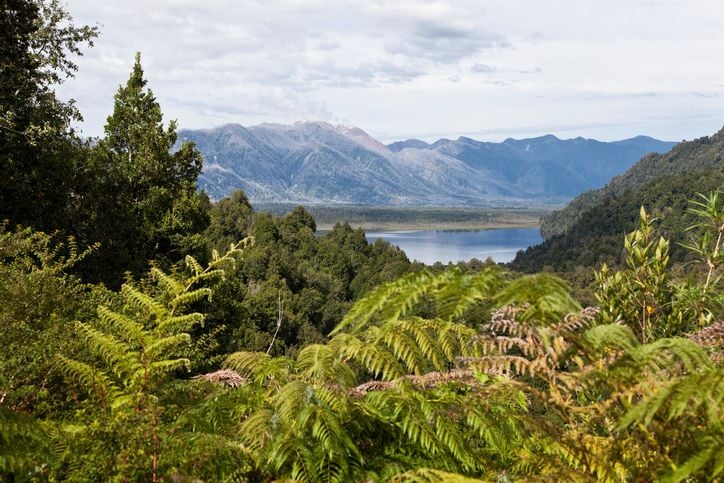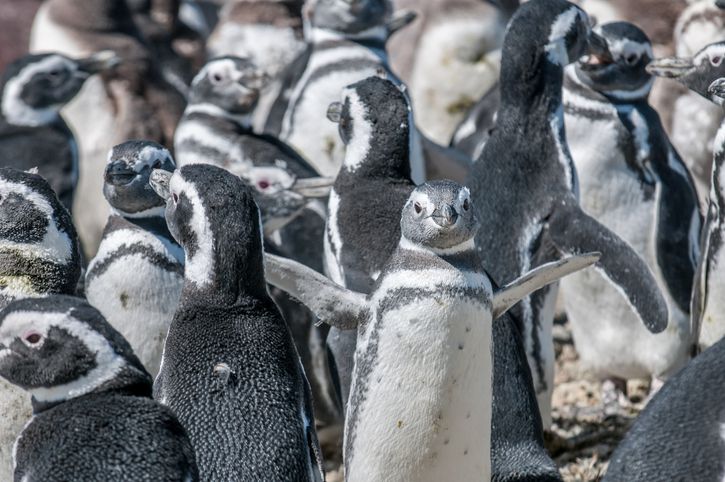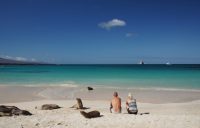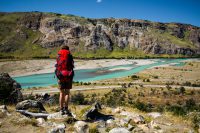In the last few decades, change has been afoot in Patagonia with regards to its approach to conservation and returning lands that have been used for grazing for centuries back to their original wild states.
Central to this transition has been a couple from the US: Kris McDivitt Tompkins and her husband, the late Douglas Tompkins, both of whom gave up their roles in huge clothing companies, Patagonia and The North Face and Esprit to work full time in conservation.
Although their motives were initially questioned by local governments, the couple has been central in helping to “rewild” parts of Patagonia by establishing huge protected areas, some of which will become national parks in the near future, and all of which have helped to protect some of the region’s most fragile places.
Establishing Conservation Land Trust and Conservacion Patagonica
Having decided to invest their time and money in conservation efforts since the early 1990s, the pair founded The Conservation Land Trust and Conservacion Patagonica.
These two organizations continue to this day in their commitment to restoring and protecting wild areas in Chile and Argentina and support economic initiatives for local people through the creation of jobs in conservation and in their newly-established national parks.
But tragically, on the 8th of December 2015, Douglas Tompkins died in a kayaking accident on Lake General Carrera in Chile. He left behind a legacy as a businessman and an important player in pushing for greater environmental protection in Patagonia. Both organizations are now led by his wife.
Rewilding parts of Patagonia
Since Douglas Tompkins’ death, Kris McDivitt Tompkins has continued the work that the couple started. The two organizations have supported, and in some cases, still play a major role in four projects in Argentine Patagonia and seven projects in Chilean Patagonia, with around 890,000 hectares (2.2m acres) preserved thanks to their efforts.
Some of the projects by the two organizations include:
Pumalín Park
In 1991, Douglas Tompkins bought a semi-abandoned tract of land 17,000 hectares (42,000 acres) in size, a few hours from Puerto Montt in Chilean Patagonia. As it contained sections of ancient and now exceptionally scarce Valdivian temperate rainforest, his plan was to protect the area.
 Between 1991 and 1998, Tompkins’ Conservation Land Trust acquired and donated a further 283,000 hectares (700,000 acres) to the project to form Pumalín Park, which was designated a Nature Sanctuary in 2005 by the Chilean President of the time, Ricardo Lagos.
Between 1991 and 1998, Tompkins’ Conservation Land Trust acquired and donated a further 283,000 hectares (700,000 acres) to the project to form Pumalín Park, which was designated a Nature Sanctuary in 2005 by the Chilean President of the time, Ricardo Lagos.
Pumalín Park has since been developed to include trails and campgrounds, making the now pristine natural landscapes of the area accessible to local and foreign visitors alike.
How to visit: Go to Pumalín Park’s website to learn more about their ongoing conservation efforts and how you can visit and stay in the park.
Monte León National Park
Conservacion Patagonica’s first project was the creation in 2002 of Monte León National Park in Argentina, a coastal park in the Santa Cruz Region of Patagonia. Having spent years as grazing land for livestock, the land that now constitutes Monte León National Park is hugely biodiverse.
Find colonies of Magellanic Penguins along its shores, spot Southern Right whales out to sea and glimpse puma, guanaco and rhea inhabiting the area.
 How to visit: Those with a vehicle can easily drive to the national park, although accommodation is only available at Hostería Monte León or in campgrounds where you are required to bring your own equipment. A series of trails allow you to visit a sea-lion colony and walk within viewing distance of the penguin colony.
How to visit: Those with a vehicle can easily drive to the national park, although accommodation is only available at Hostería Monte León or in campgrounds where you are required to bring your own equipment. A series of trails allow you to visit a sea-lion colony and walk within viewing distance of the penguin colony.
Patagonia Park
In the Chacabuco Valley, an area where grassland and southern beech forests meet in Chilean Patagonia’s Aysen region, lies one of the newest parks created thanks to the efforts of Conservacion Patagonica.
Since the purchase in 2014 of the main sheep ranch in the area, Estancia Valle Chacabuco, the organization has been working to restore the park’s various ecosystems. Recently, parts of the park have been opened to the public and infrastructure, including campgrounds, trails, lodges and an on-site restaurant, has been built to accommodate visitors.
Once further conservation work has been completed, the park will be donated to the Chilean government and it will be designated a national park.
How to visit: Go to the Patagonia National Park website to find out about the accommodations available in the area, along with other information about the park’s facilities.
No comments yet
There are no comments on this post yet.





Leave a comment